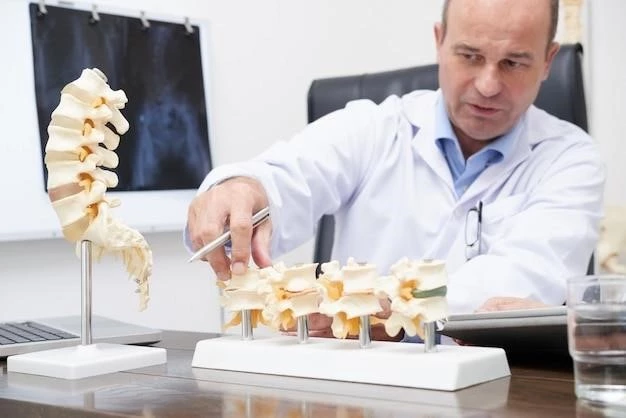Introduction
Proximal Myotonic Myopathy (PROMM) is a genetic disorder causing muscle weakness‚ myotonia‚ and cataracts. Learn more about this condition.
Overview of Proximal Myotonic Myopathy (PROMM)
Proximal Myotonic Myopathy (PROMM) is a genetic disorder characterized by muscle weakness‚ myotonia‚ and cataracts. It is linked to the type 2 myotonic dystrophy gene‚ sharing similarities with myotonic dystrophy type 1 and type 2. Individuals with PROMM may experience a range of symptoms such as weakness of the neck flexors and proximal extremity muscles. Diagnosis is crucial for appropriate management and genetic counseling.
Understanding Proximal Myotonic Myopathy
Learn about Proximal Myotonic Myopathy (PROMM)‚ its symptoms‚ genetic link to myotonic dystrophy type 2‚ and differences from other muscular disorders like myotonic dystrophy type 1 and type 2.
Comparison with Myotonic Dystrophy Type I (DM1) and Type II (DM2)
Proximal Myotonic Myopathy (PROMM) shares genetic and clinical features with Myotonic Dystrophy Type 1 (DM1) and Type 2 (DM2). While DM1 is more common and severe‚ DM2‚ also known as PROMM‚ typically presents with milder symptoms and a later onset. Understanding these distinctions is crucial for accurate diagnosis and treatment.
Clinical Features and Diagnosis
Discover the distinct clinical features of Proximal Myotonic Myopathy (PROMM) and the diagnostic approaches essential for identifying this genetic disorder.
Signs and Symptoms of PROMM
Proximal Myotonic Myopathy (PROMM) is characterized by muscle weakness‚ myotonia‚ and cataracts. Patients may also exhibit cardiac involvement. Understanding these symptoms is crucial for early detection and appropriate management of PROMM;
Genetic Aspects
Understanding the genetic link of Proximal Myotonic Myopathy (PROMM) to the type 2 myotonic dystrophy gene is essential for diagnosis and treatment decisions. Dive into the genetic aspects.
Linkage to the Type 2 Myotonic Dystrophy Gene
Proximal Myotonic Myopathy (PROMM) is associated with the type 2 myotonic dystrophy gene. Research confirms the presence of a shared ancestral founder effect‚ highlighting the genetic basis of this disorder and aiding in the understanding of its inheritance patterns.
Disease Progression
Explore the onset and severity of Proximal Myotonic Myopathy (PROMM) to better understand the progression of this genetic disorder and its impact on individuals.
Onset and Severity of PROMM
Proximal Myotonic Myopathy (PROMM) typically manifests in adulthood‚ with symptoms like muscle weakness and cataracts. The severity can vary‚ and there is no direct correlation between the length of the genetic expansion and the disease’s impact. Understanding the onset and severity of PROMM is crucial for managing the condition effectively.
Research and Studies
Stay informed about the latest research and key findings on Proximal Myotonic Myopathy (PROMM) that can aid in understanding this genetic disorder.
Key Findings on Proximal Myotonic Myopathy
Research confirms that Proximal Myotonic Myopathy (PROMM) resembles myotonic dystrophy type 2 (DM2)‚ presenting later in life with milder symptoms. Genetic studies have identified a shared haplotype among European origins‚ indicating a potential ancestral founder effect. Understanding these key findings can shed light on the genetic underpinnings and variability of PROMM.

Differential Diagnosis
Learn how to differentiate Proximal Myotonic Myopathy (PROMM) from other muscle disorders. Identify key characteristics to aid in accurate diagnosis and treatment planning.
Understanding the distinction between Proximal Myotonic Myopathy (PROMM) and other muscle disorders is crucial for accurate diagnosis and tailored treatment plans. While PROMM shares clinical and genetic similarities with myotonic dystrophy type 2 (DM2)‚ recognizing specific features such as age of onset‚ symptom severity‚ and genetic markers can help healthcare professionals differentiate PROMM from similar conditions effectively.

Treatment and Management
Explore different approaches to address symptoms of Proximal Myotonic Myopathy (PROMM)‚ considering tailored treatment plans for optimal management of this genetic disorder.
Distinguishing PROMM from Other Muscle Disorders
Recognizing the specific features of Proximal Myotonic Myopathy (PROMM) compared to other muscle disorders‚ such as myotonic dystrophy type 1 (DM1) and type 2 (DM2)‚ is essential for accurate diagnosis and tailored treatment plans. Understanding the unique clinical presentation and genetic aspects of PROMM can help healthcare providers differentiate it from similar conditions effectively.
Future Perspectives
Stay optimistic about potential developments in understanding and treating Proximal Myotonic Myopathy (PROMM). Continual research may lead to improved diagnostic methods and innovative therapies to enhance the management of this genetic disorder.
Potential Developments in Understanding and Treating PROMM
Based on the available information on Proximal Myotonic Myopathy (PROMM)‚ it is advised to carefully differentiate PROMM from other muscle disorders to ensure accurate diagnosis and appropriate treatment planning. While PROMM shares similarities with myotonic dystrophy type 2 (DM2)‚ understanding specific features like age of onset‚ symptom severity‚ and genetic markers can aid healthcare professionals in distinguishing PROMM effectively. Staying informed about the latest research and key findings on PROMM is essential for advancing the understanding and potential treatment options for this genetic disorder.
